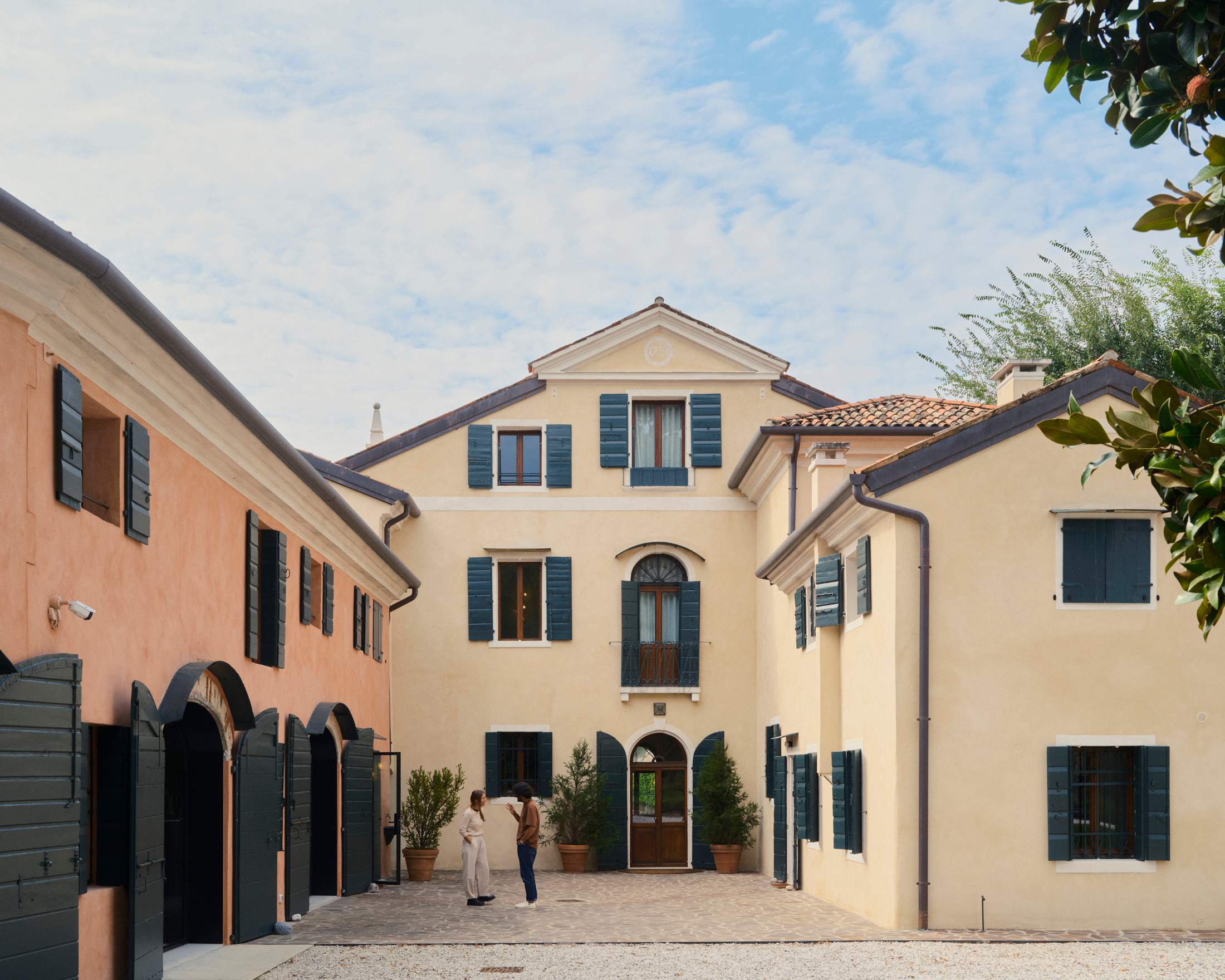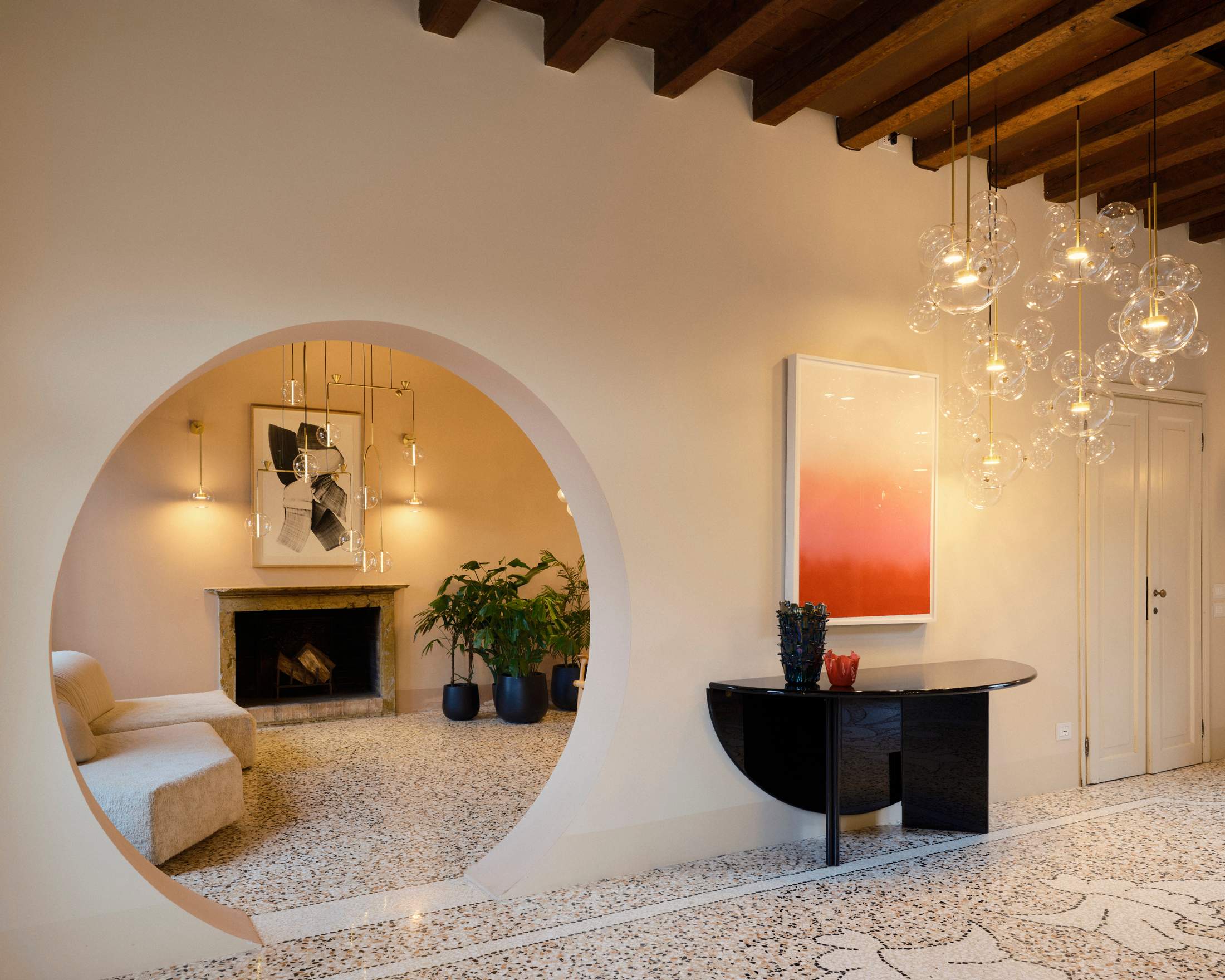Expo / Global
Making it together
Not long ago, many were questioning the need to have offices at all – but there’s a growing awareness that proximity to production can help to keep standards high. We visit firms in Japan, Morocco and Italy to see how HQs with in-built factories or labs are keeping staff engaged and improving the products on offer.
Big clothing, furniture and design firms today tend to make their products in locations far from where they are conceived. Perhaps it was globalisation and rampant offshoring that drove this? Or maybe it had something to do with the coronavirus pandemic, which helped workers to make the case that they could fulfil their roles from anywhere? Whatever the cause, how things are created can often feel detached from a company’s day-to-day operations.
Luckily, many entrepreneurs are now seeking to bridge the gap between conception and final product by integrating manufacturing into their office spaces. Why? It offers employees opportunities to test ideas more responsively and bring better products to market at greater speed. This can help employers to cultivate a more engaged workforce, as staff are able to see the fruits of their labour almost immediately.
Over the following pages, we visit three firms that chose to bring production in-house. From the pair who followed a thread that took them from the US to Morocco and the firm seeking a competitive advantage in Japan to an Italian firm that found a fresh use for some former stables, each reimagined their workplace to help them gallop ahead with their plans. —
Beni Rugs
Tameslouht, Morocco
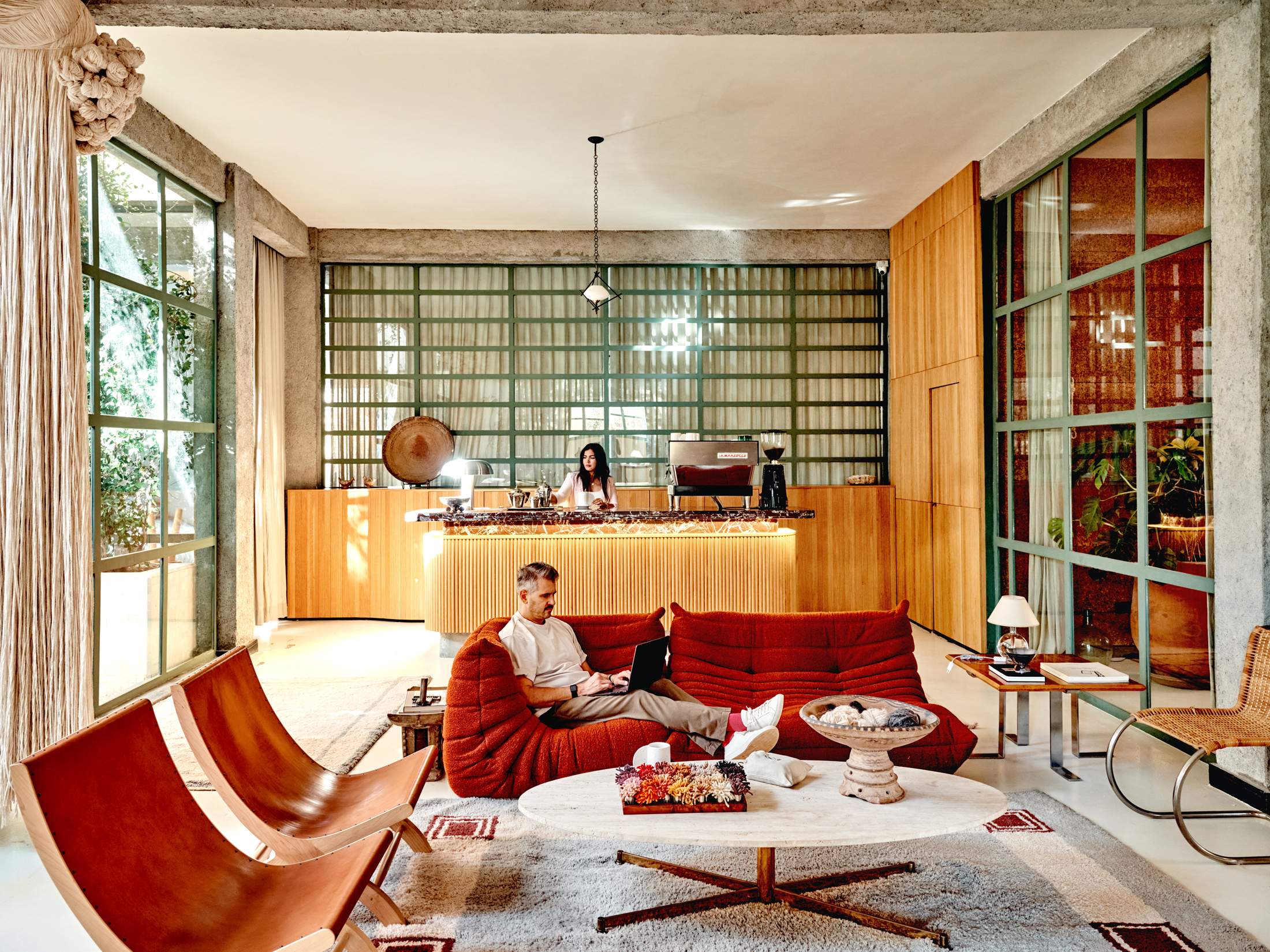
It’s fair to call Beni Rugs’ founders, Robert Wright and Tiberio Lobo-Navia, a tenacious pair. Back in 2015, Wright was in Morocco for a photoshoot involving the shoe brand he worked for at the time. He ended up buying several handmade rugs from a shop in Marrakech and shipping them back to New York. The rugs were an immediate hit with friends but both Wright and Lobo-Navia, who had joined him for the end of the trip, had noticed that the buying process wasn’t the smoothest. “Basically, it was hard to find a design you loved in the size you wanted,” says Lobo-Navia, who everyone calls Tibs. The couple saw a gap in the market for a beautiful product sold online that was easier to buy and came in living-room-friendly sizes. They set about turning Beni Rugs into a reality.
Despite not having any experience in the rug industry and few contacts in Morocco – a country with its own set of social, cultural, religious and linguistic complexities – Wright found himself on a plane bound for Marrakech the following spring. “I found my way back to the same shop,” he says. “I approached the owner and told him we had this custom-rug idea and wanted to work with him. He said, ‘Absolutely not. This is a crazy idea! You have to understand that Moroccan weaving doesn’t work like that.’”
That sort of initial knock-back would have been enough to sink an idea for many budding entrepreneurs. But not Wright and Lobo-Navia who, drawing on their wells of tenacity, weren’t put off at all. Wright says they had a “gut feeling” about the idea and it was enough to try a different tack. They approached the owner’s cousin and tasked him with convincing his family member to hear the pair out. The plan worked and Beni Rugs officially launched with six looms and 12 weavers.
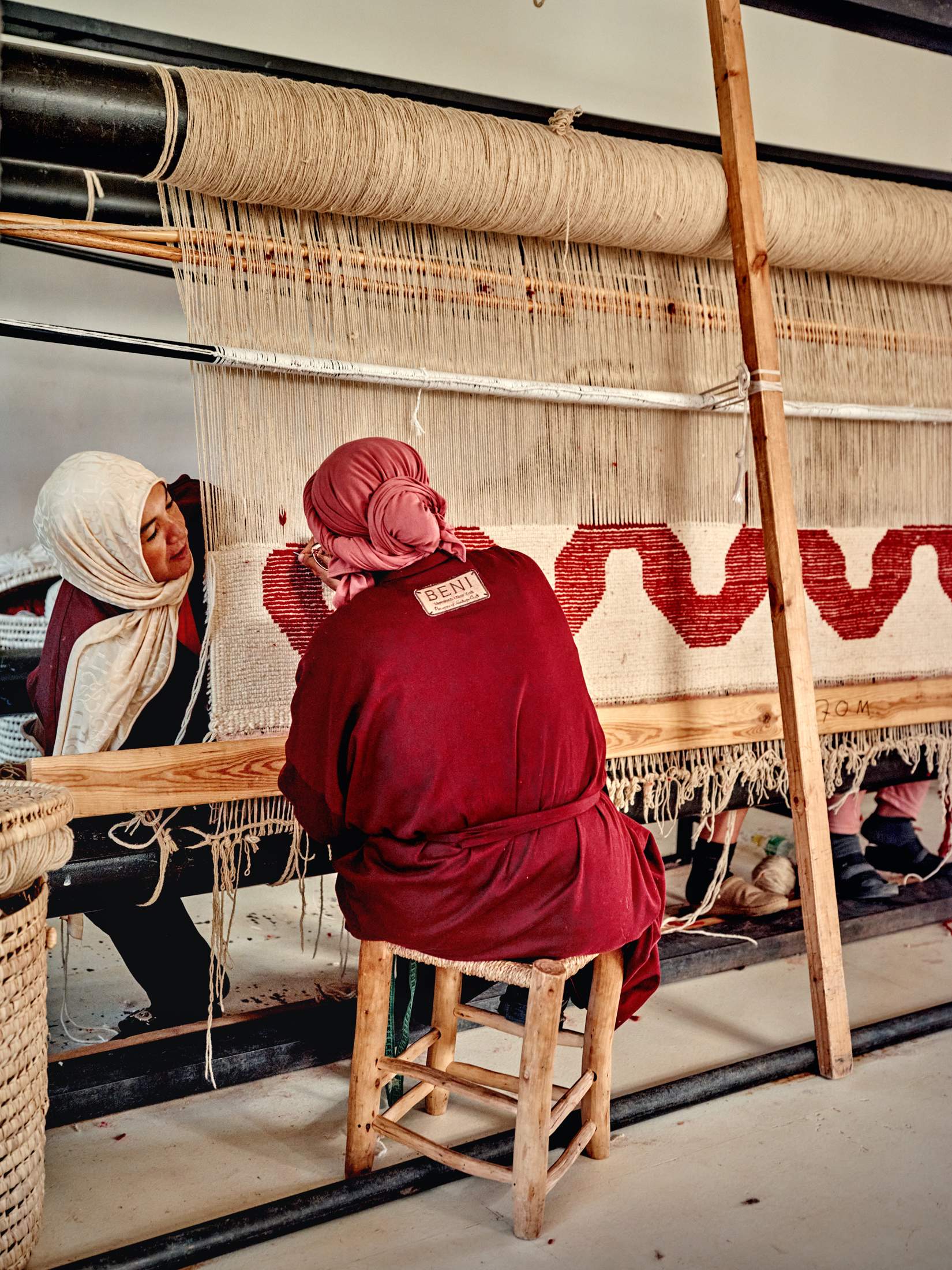
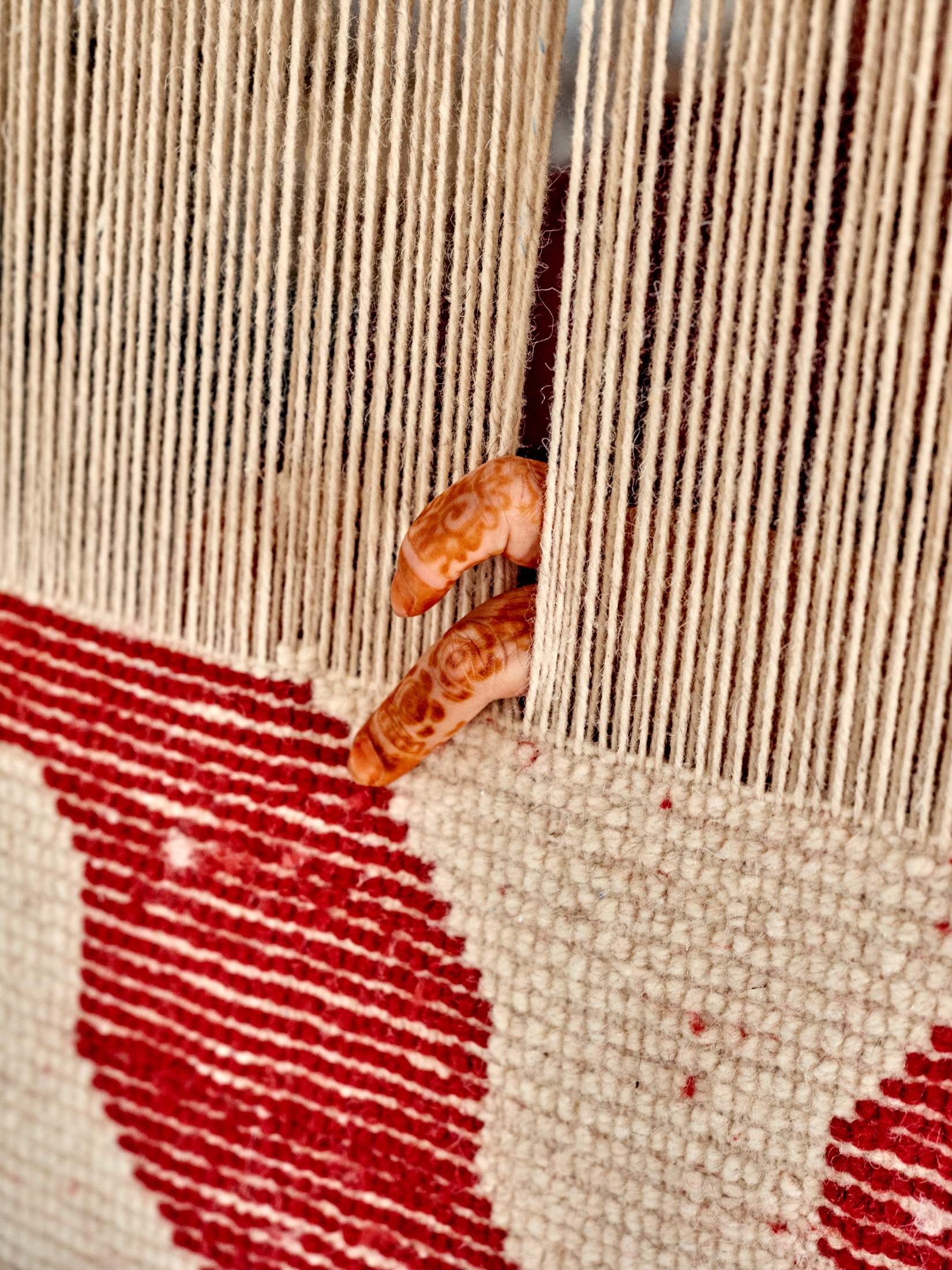
Things have come a long way since the website first went live in 2018. Its founders organised the first photoshoot at a friend’s modernist home in Michigan that same year. Wright and Lobo-Navia may no longer be married but they call each other “family” and clearly share a common vision. Indeed, their shared desire to push boundaries also led to the signing of the lease for the new headquarters in 2020, rented from artist Mohamed Mourabiti. Located about half an hour’s drive outside Marrakech in the town of Tameslouht, the HQ embodies just how far the brand has travelled. Painted in a bright blood orange that contrasts with the deep blue of the cloudless Moroccan sky, stepping through the gate feels like entering a sanctuary – or perhaps a high-end rescue centre given the number of cats milling about, all of them given “Spanish old-lady names”, jokes Lobo-Navia, such as Hortensia and Jacinto.
Walking past a garden full of olive trees, succulents and cacti, as well as a pétanque court, you arrive at an impeccable showroom which feels influenced by Lobo-Navia’s years working in New York’s hospitality scene. There’s a red 1970s Togo sofa from Ligne Roset in front of a wood-and-marble bar with a La Marzocco coffee machine perched atop it. There are Clara Porset chairs from Luteca and a stunning locally made table in square pieces of Thuya wood; on its surface a collection of weaving books and antique trinkets. Next door’s office has a pair of mid-century sputnik chandeliers in Murano glass from a vintage dealer in Marrakech, while the walls are covered in Moroccan cork. Everywhere you look there are soft, colour-popping rugs underfoot, arranged with such taste that you want to step around rather than over them.
One of the things you notice about the rugs is that the designs are contemporary and don’t immediately nod to Moroccan aesthetics. “Part of the aim was to not appropriate traditional designs,” says Wright, who adds that the idea has always been to use Moroccan weaving talent and techniques – from flat woven to knotted – to create something different. The founders knew from early on that, for several factors including quality control and consistency, they needed to bring weaving in-house and “vertically integrate” as Lobo-Navia calls it. “We learned along the way,” he adds. “Every system we’ve built from the ground up, on our own.”
Although slowed by the pandemic, the Tameslouht atelier, showroom and headquarters opened in May 2021 after extensive refurbishment driven by the founders’ desire to create the right working environment. “This building was dark and broken up, with the courtyard walled in,” says Wright. Windows were installed around the central external space, where a 150-year-old olive tree was planted and a fountain added. “Our whole idea was to have transparency between the business side and the weaving.”
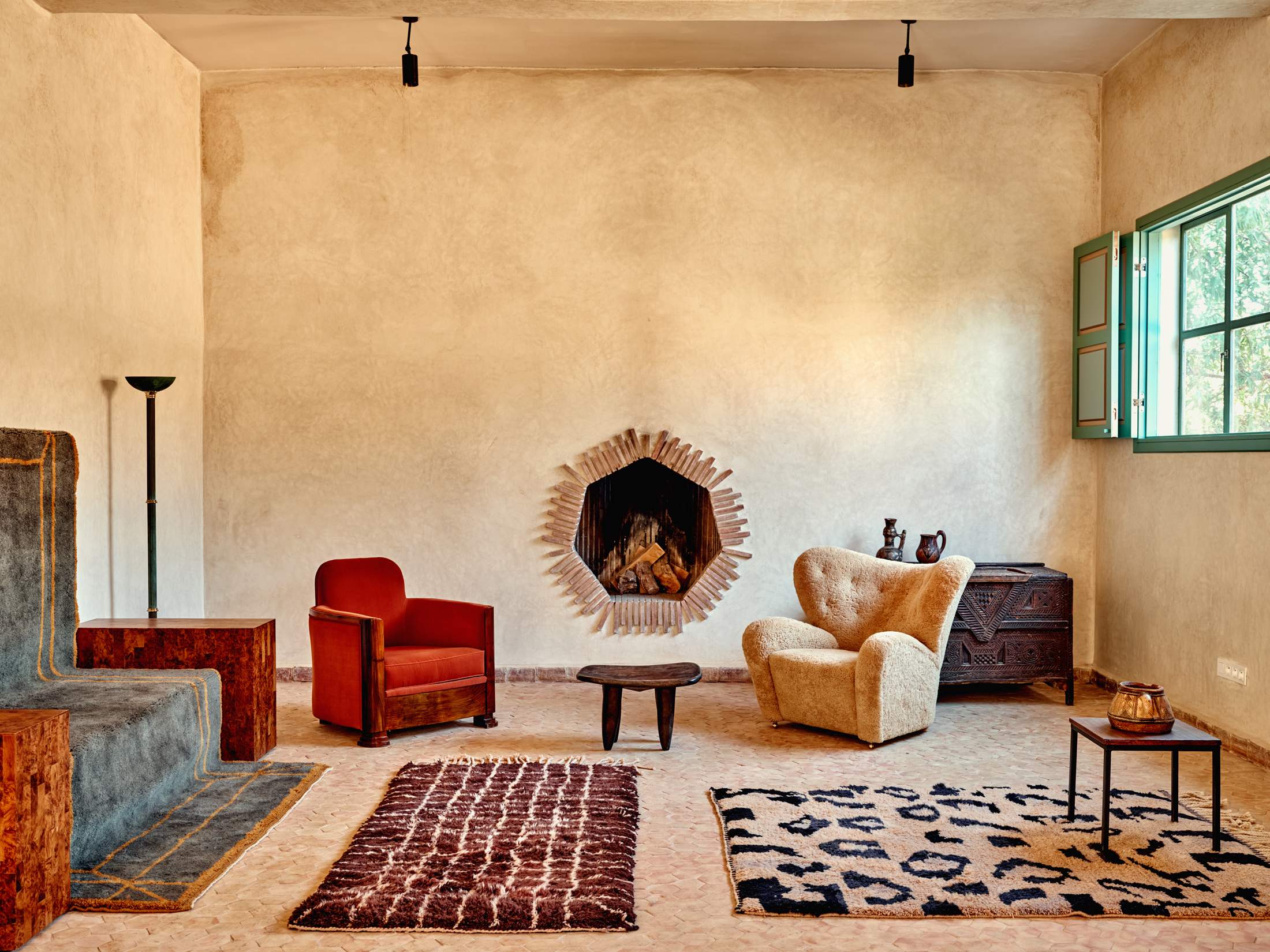
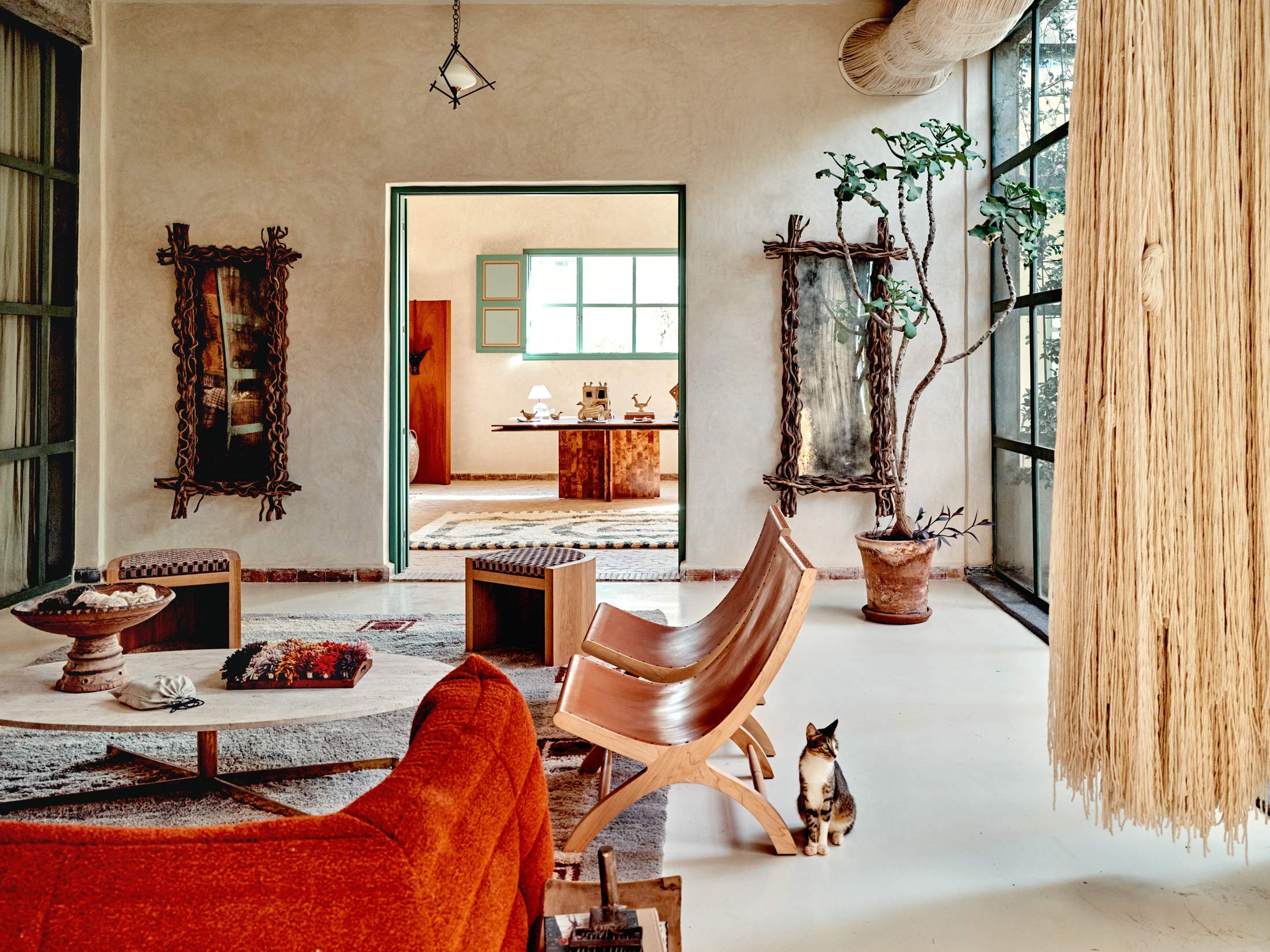
Hortencia the cat surveys the Beni Rugs showroom while shaded by Clara Porset chairs from Luteca
Beni Rugs’ HQ started with about 20 weavers, all of them women, and the number has since grown to 65. A new atelier opened in Sidi Zouine at the end of September, employing 20, and with the capacity to grow to more than double that number. Wright and Lobo-Navia are also eyeing another production facility, all part of creating centres of weaving talent. And while the brand still works with the initial partner for some orders to to a growth that more than tripled in the first few years of business, and currently stands at 40 per cent year-on-year, all rugs pass through Tameslouht for final checks, as well as the washing and surface burning that are part of the cleaning and softening process. After the rugs are hosed-down, they’re left out the back of the building and on the roof to bake dry in the North African sun.
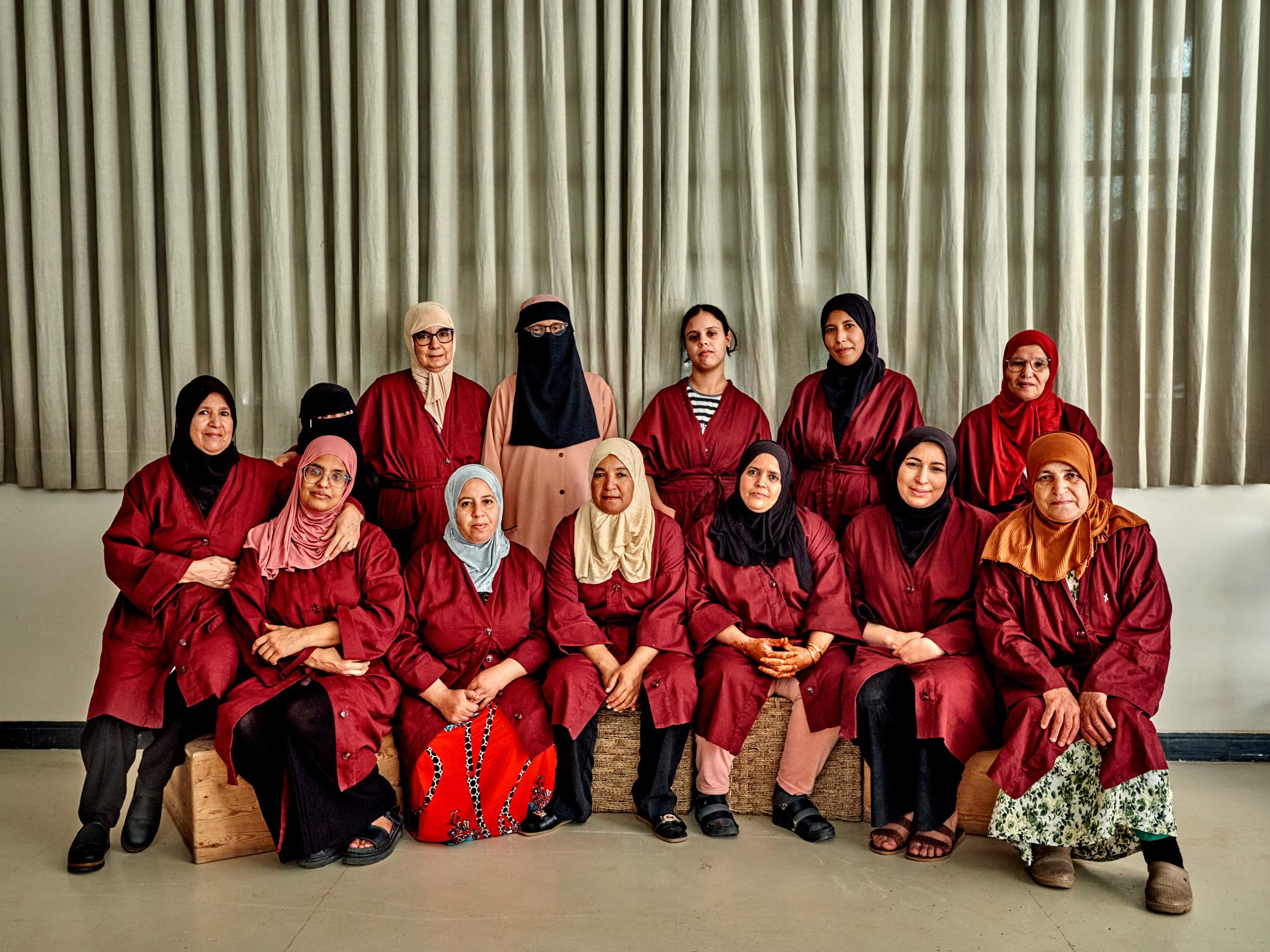
Wright and Lobo-Navia’s model clearly differs from the often-extractive relationship in which Western companies come to developing countries simply because labour is cheaper. Alongside hiring people, the pair has also clearly committed to place. Both have been learning French and Moroccan Arabic, known as Darija, with Lobo-Navia renting a villa a 10-minute drive away from the HQ and Wright based in Marrakech (when he’s not in Barcelona or New York).
Both admit that bringing staff into the office wasn’t easy at the beginning due to cultural differences. But it has also proved a game changer. Traditionally, Moroccan weavers work at home or in small cooperatives near where they live, having to source their own yarn and find a market afterwards. At Beni, five buses a day bring people from Marrakech and villages to the office, and Beni’s founders have made sure that there is a real possibility for those coming onboard to work their way up from a beginner to a maallema (master). “In other facilities it’s hard to find young people,” says Afaf Chouhaidi, Beni’s director of operations. “But in the past few months we have had 10 young weavers join. There’s a career path.”
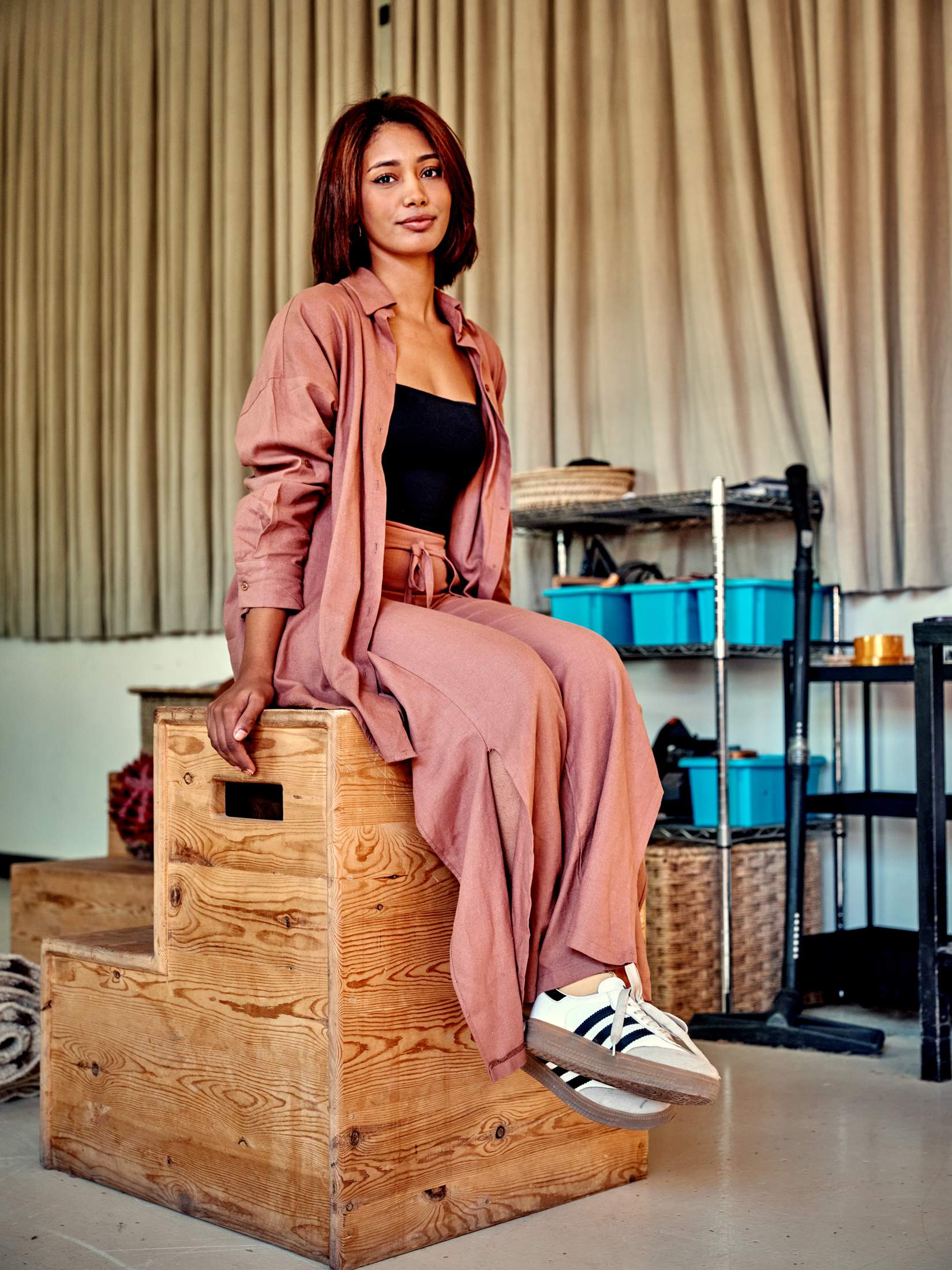



Lobo-Navia says that the HQ is all about building a work culture. “Our vision is unusual,” he says. “It’s community, it’s collaborative.” Alongside the couscous Fridays organised for the team, and the annual go-karting attended by the hyper-competitive washing and packing men, each weaver also gets a chance to make their own rug, all part of giving back to people who are used to making for others rather than thinking about a design for their own homes. Clearly the Beni founders want people to relish coming to work and value a craft that has sometimes been under-appreciated in Morocco.
Last year, the company signed with bricks-and-mortar retailer, Design Within Reach, becoming available in its 65 outlets throughout the US. Beni had to ramp up production to provide inventory when previously the model had been entirely made-to-order. And while it was stressful, they got the job done. When the shipment was finally complete in the early hours of the morning, Lobo-Navia and Wright sent a dkakiya music troupe to the HQ to serenade employees as a thank you.
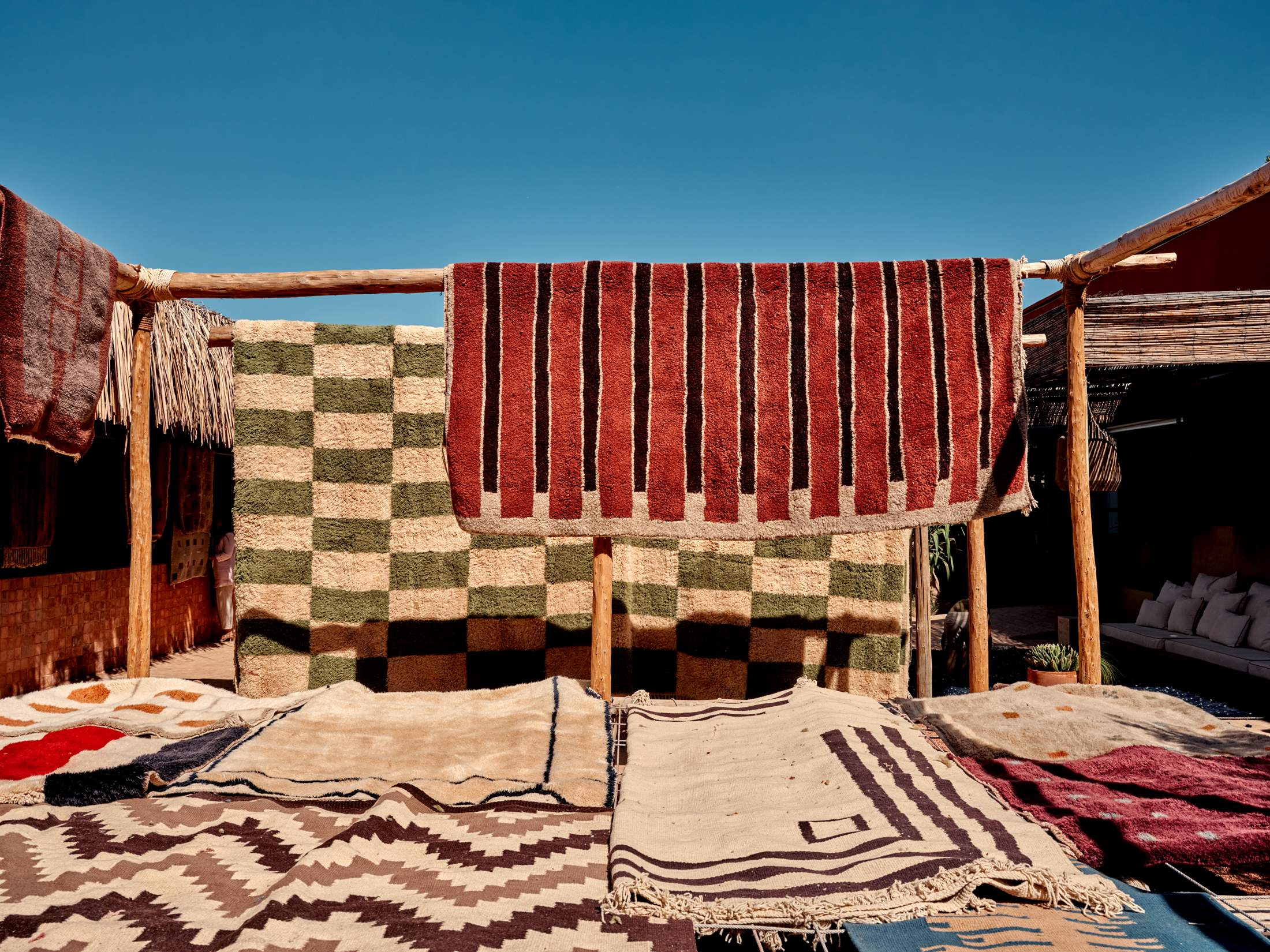
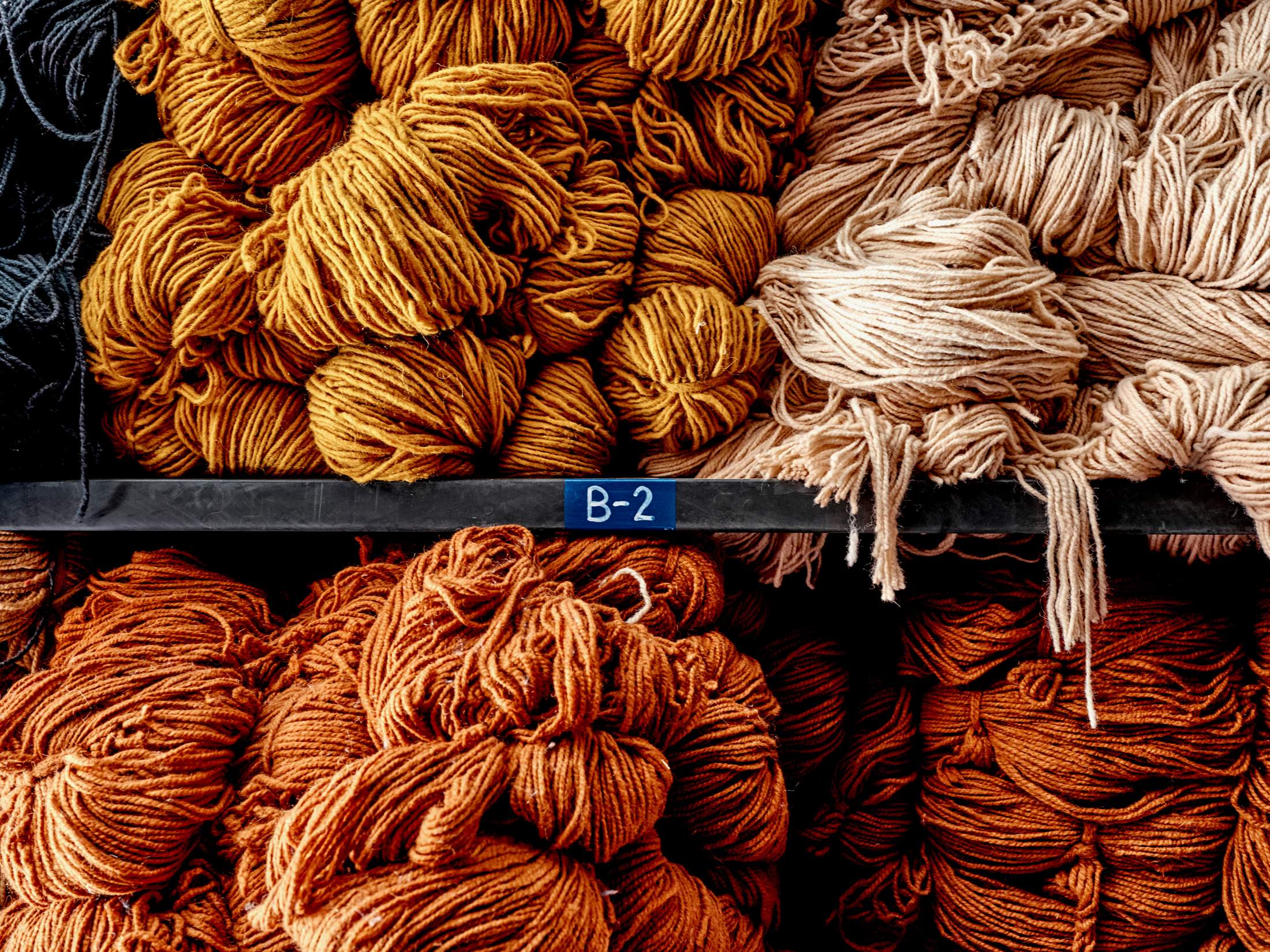
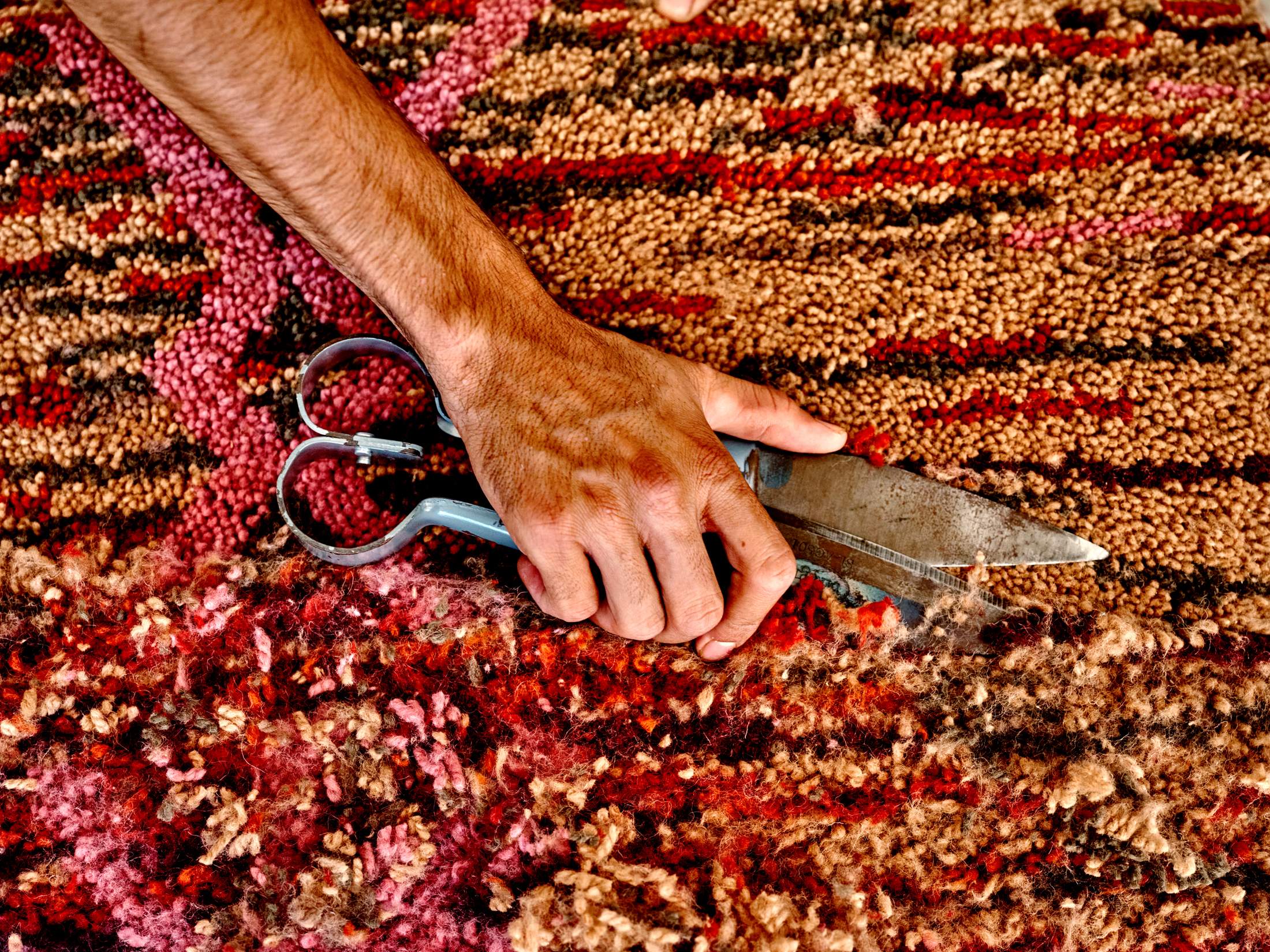
With experimentation on the horizon, including a soon-to-come denser weave – and possible extension to another building in Tameslouht as the rug collection of over 240 designs grows – Beni wouldn’t be where it is without 66-year-old maallema Rachida Ouilki, whose quietly strong gaze suggests that she may share some of the tenacious qualities of her employers. Weaving since the age of 10, she says she is happy to teach new people coming through Beni’s doors the craft. “The weaver should love what they’re doing,” she says from a shaded area in the back patio. Does she? “Too much.”
benirugs.com
Arc’teryx
Tokyo, Japan
“There’s such an amazing connection between the brand and Japan with regards to the simplicity, beauty and innovation that we love,” says Katie Becker, the chief creative officer of Vancouver-based outerwear company Arc’teryx. She has just overseen the opening of the brand’s new outpost in Tokyo, its first overseas. Renowned for its minimalist, high-performance design, Arc’teryx worked with Torafu Architects to reimagine a concrete-and-glass building in the Daikanyama neighbourhood. Its primary aim is to function as a base for operations and community-building in Japan.
But unlike an ordinary creative workplace, the office has room for pattern makers and sewers to work on new ideas. Additionally, the basement, which doubles as an events space, contains a cutting room that’s equipped with materials and tools. Here, the Arc’teryx team can rapidly prototype and test ideas, speeding up the production process. “This is called a creation centre because we can actually make things here,” says Becker. “There are sewing machines and steam-tape machines. We can make a waterproof jacket in a day and go outside to test it right away.”
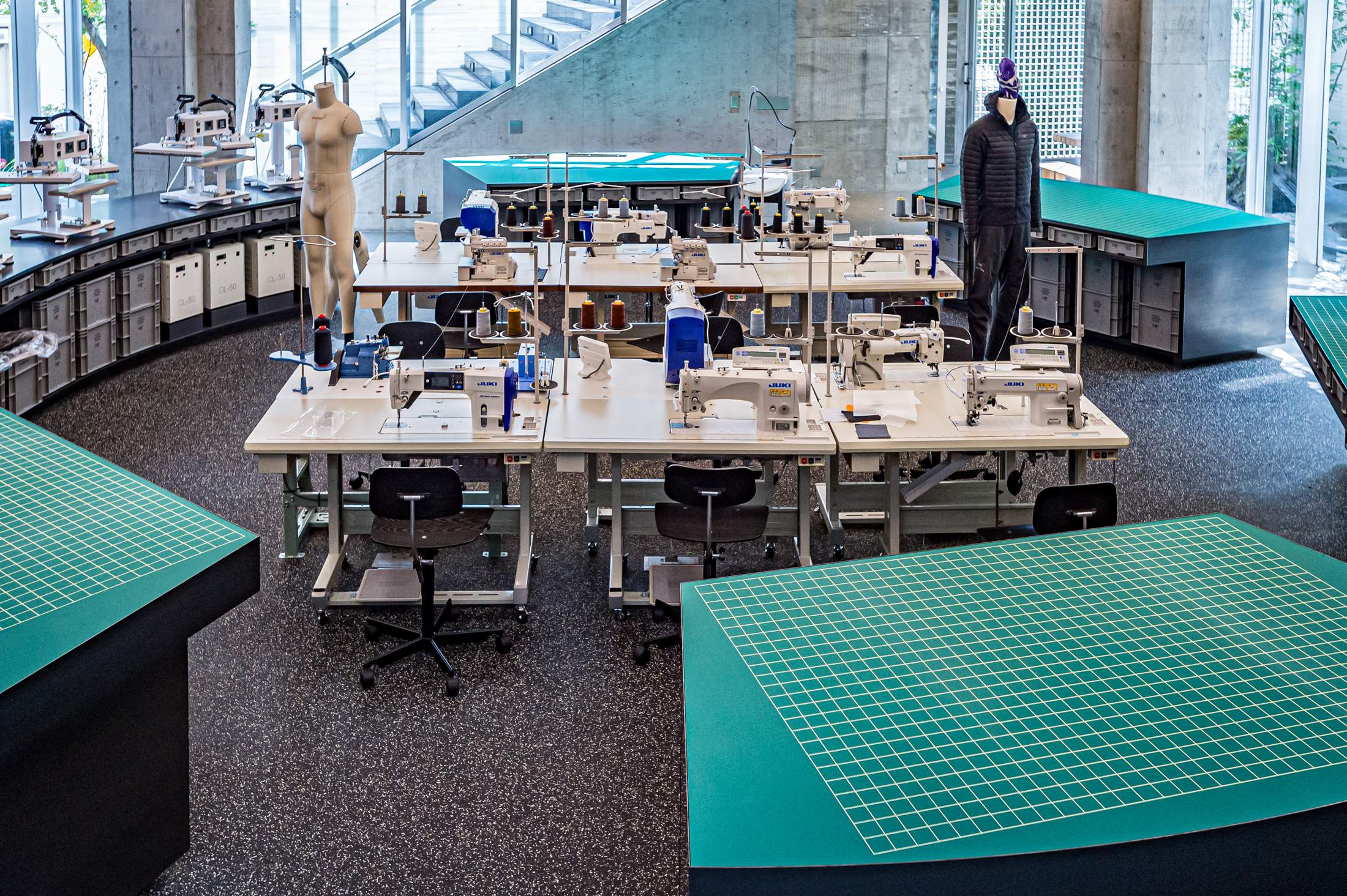

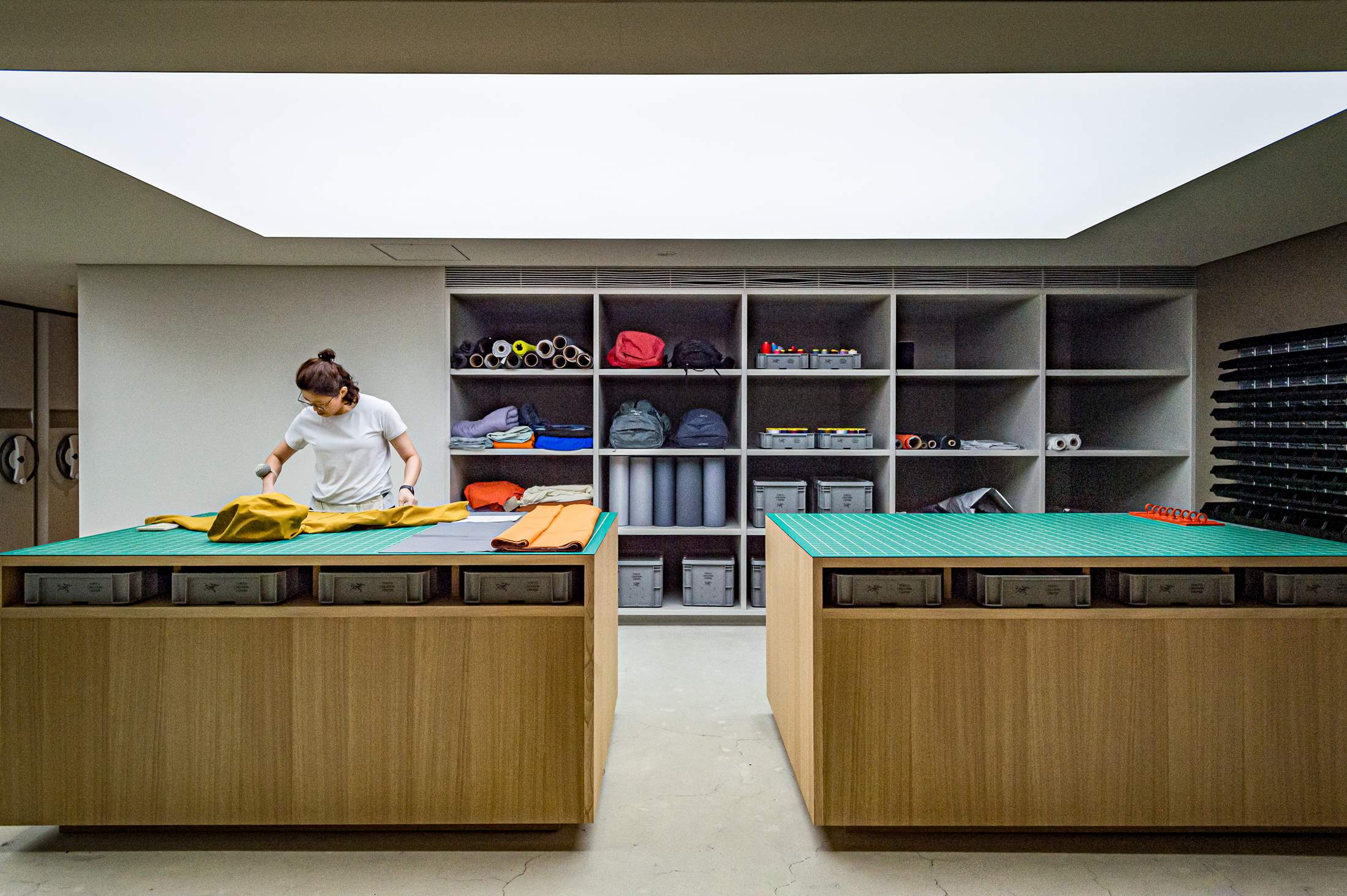
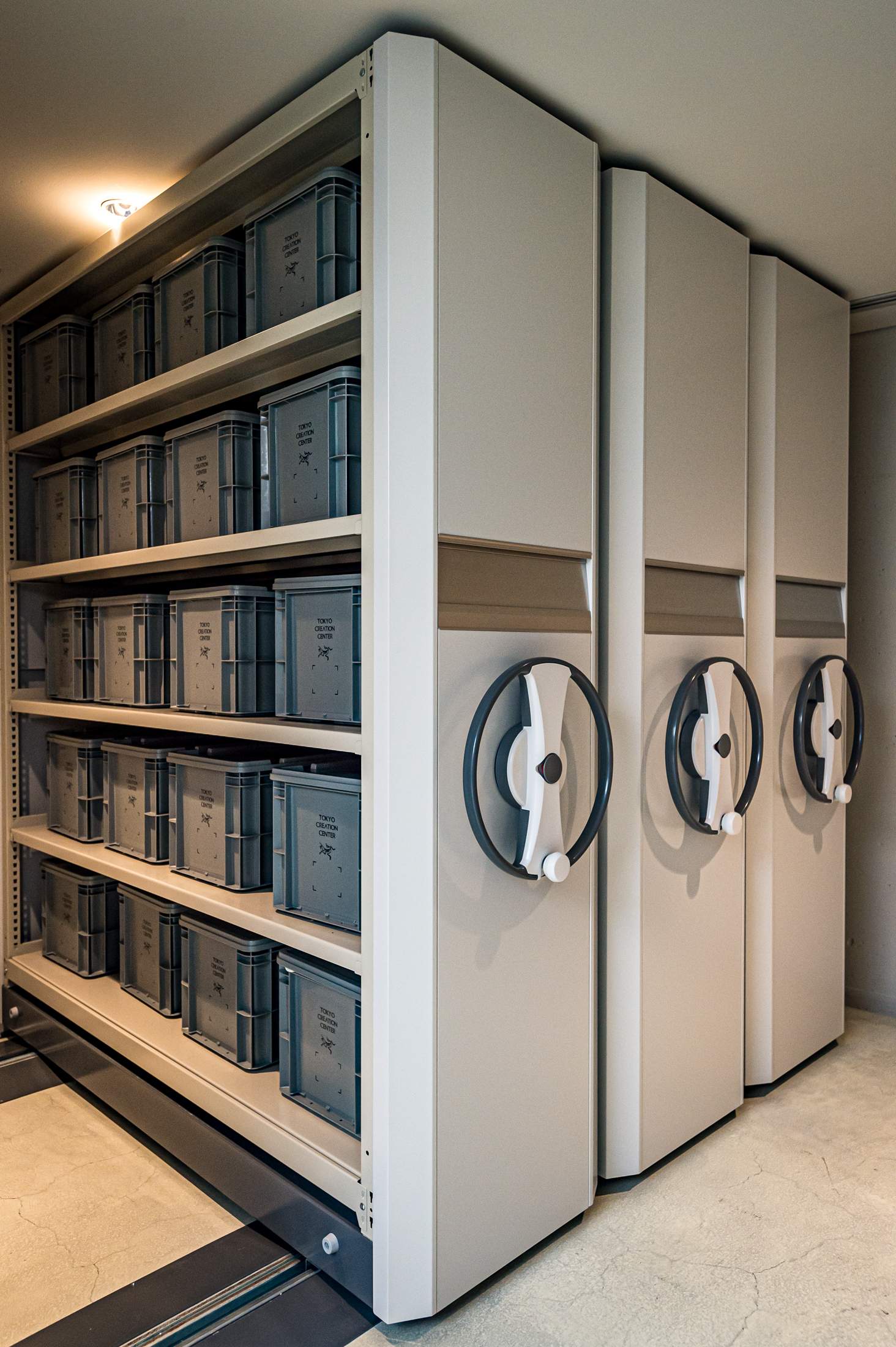
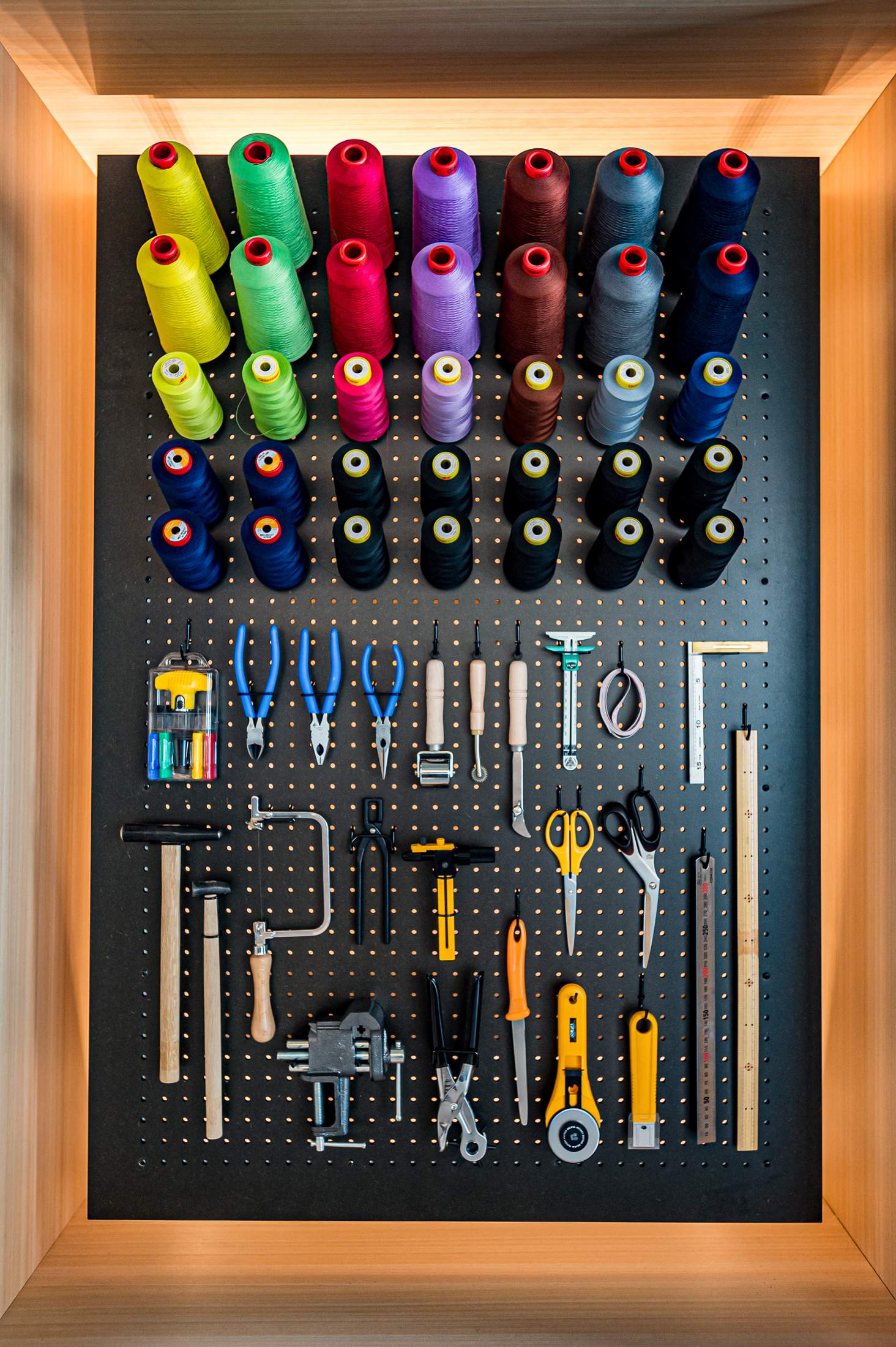

For Arc’teryx employees who aren’t out in the field exploring new concepts, the building has been designed to welcome the elements. The roof is an open garden area inspired by both the mountain landscapes of British Columbia and Japan’s rich forests. Here, seating made from Yanase cedar from Kochi prefecture has a circular form to encourage conversation and creative back-and-forth. “We had this concept of creating a connection between inside and outside, the surrounding city and nature, as well as a place that is enriched by elements such as technology, culture and nature,” says Torafu architect Koichi Suzuno. The interior is filled with mountain-inspired artworks while one double-height wall is lined with Japanese craft and design, alongside vintage Arc’teryx jackets and mountain kit. “The wall is designed to provoke discussion and show the brand in context by displaying items from Japan with pieces that convey Arc’teryx’s history and philosophy,” says Suzuno.
arcteryx.com; torafu.com
Giopato & Coombes
Treviso, Italy

“It was a classic romance,” says Cristiana Giopato, the co-founder of leading lighting company Giopato & Coombes. She tells monocle that she met her husband, UK-born Christoper Coombes, while on an Erasmus study programme in the 1990s. Today they work from an elegant 18th-century villa in the city of Treviso in northern Italy, designing and producing lighting pieces for hotel lobbies, jewellery shops and apartments worldwide.
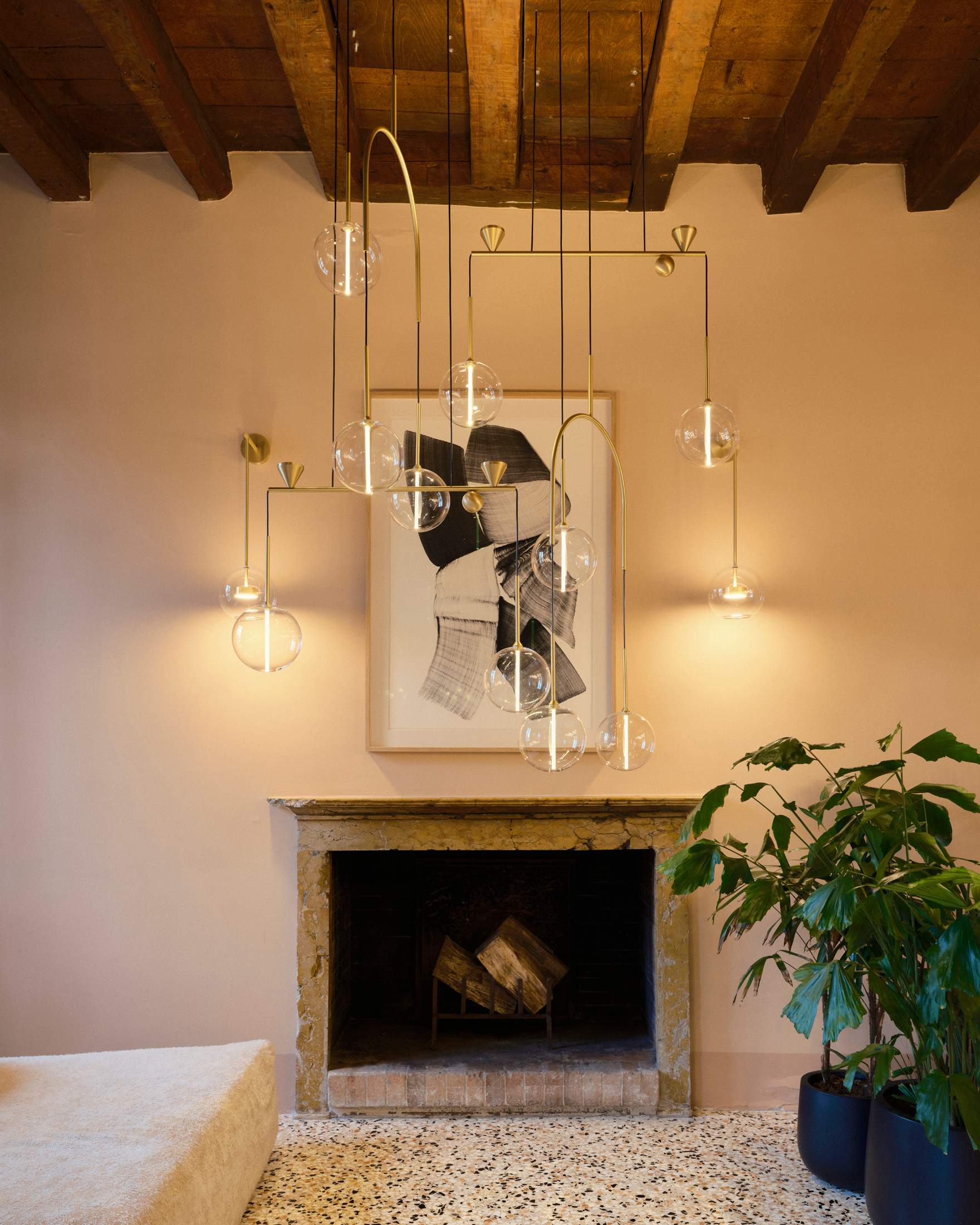
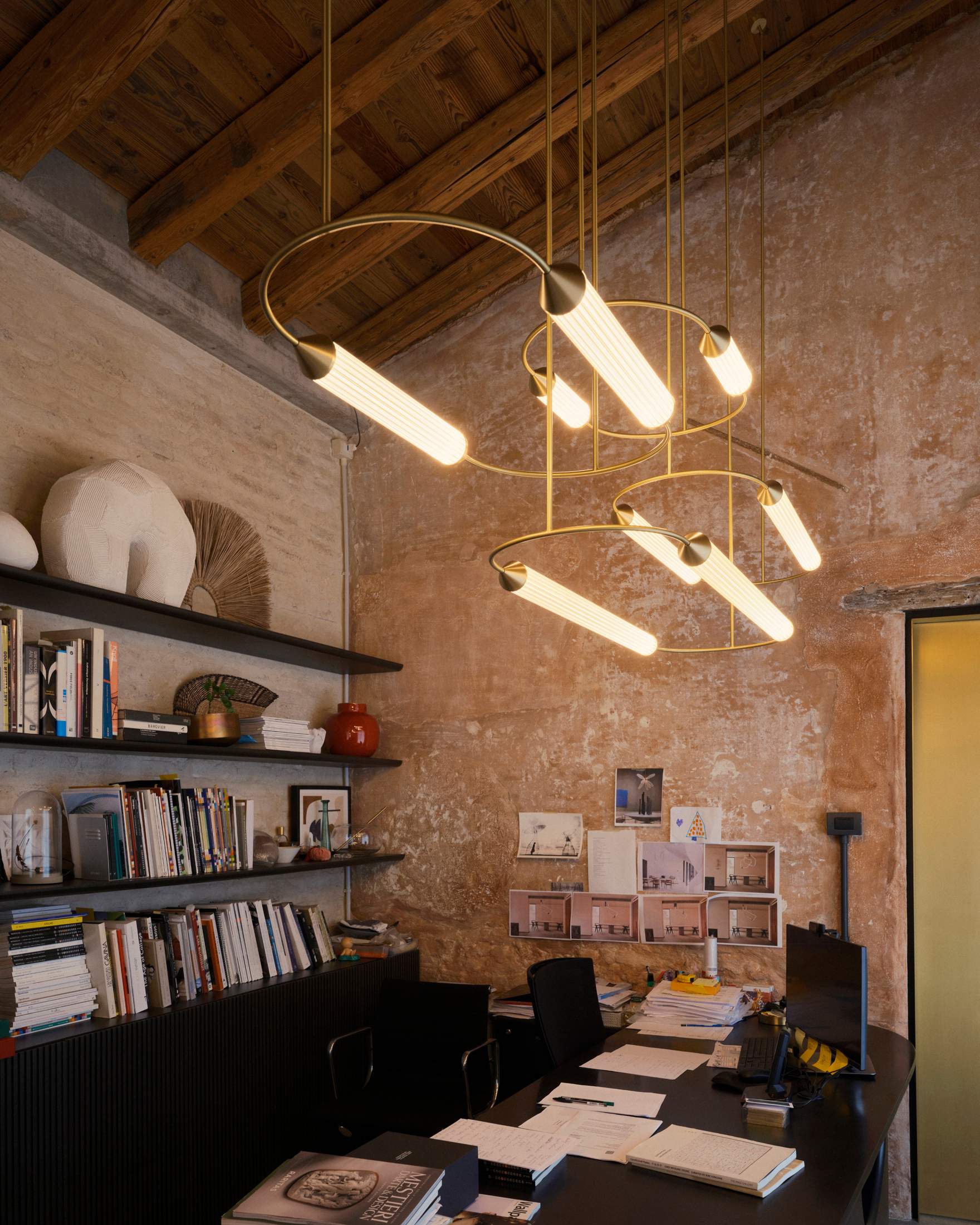
After starting their careers in Milan – Giopato with Patricia Urquiola and Coombes with George Sowden – and working there for a decade, the duo felt that something was missing. “We wanted direct involvement in projects,” says Giopato. “In 2014 the time seemed right for us to bring everything in-house, to have a vertical model and become our own brand,” she adds, looking out over the villa’s lawns to a large former stable building that they have recently converted into a cavernous workshop and office space hosting 38 staff.
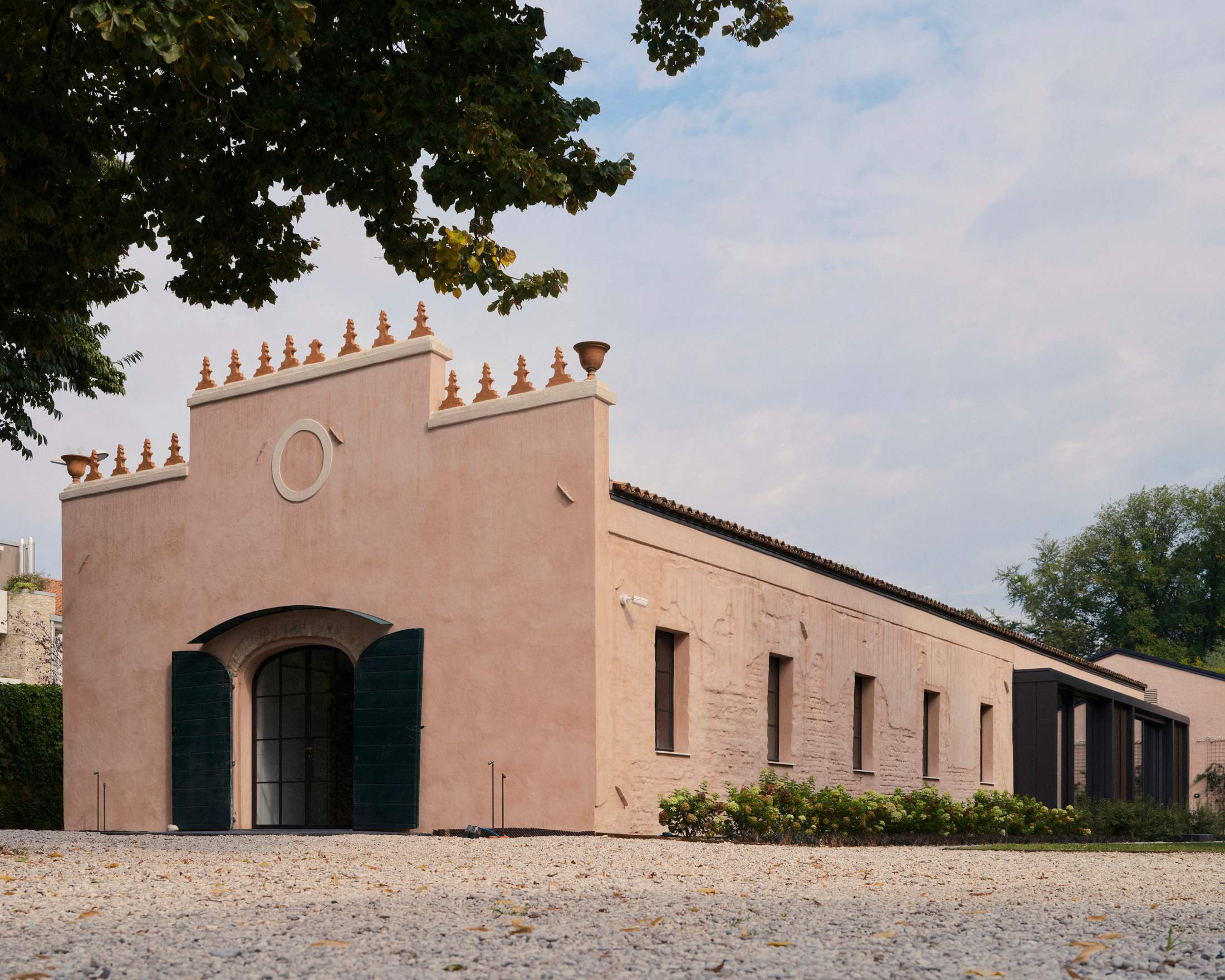
From the outset, the duo were keen to experiment with their fledgling brand. “One of the first things that we learnt was the importance of a continuous learning process,” says Giopato, in a soft but self-assured voice. As such, the company has invested in showcasing the artistic, conceptual stages of its work, displaying experimental installations with titles such as “To Draw Breath”. In 2024, Giopato & Coombes exhibited in Seoul, Milan, Copenhagen and New York. “Through these experiments, we realised that there’s the idea, the market and the production,” says Giopato.
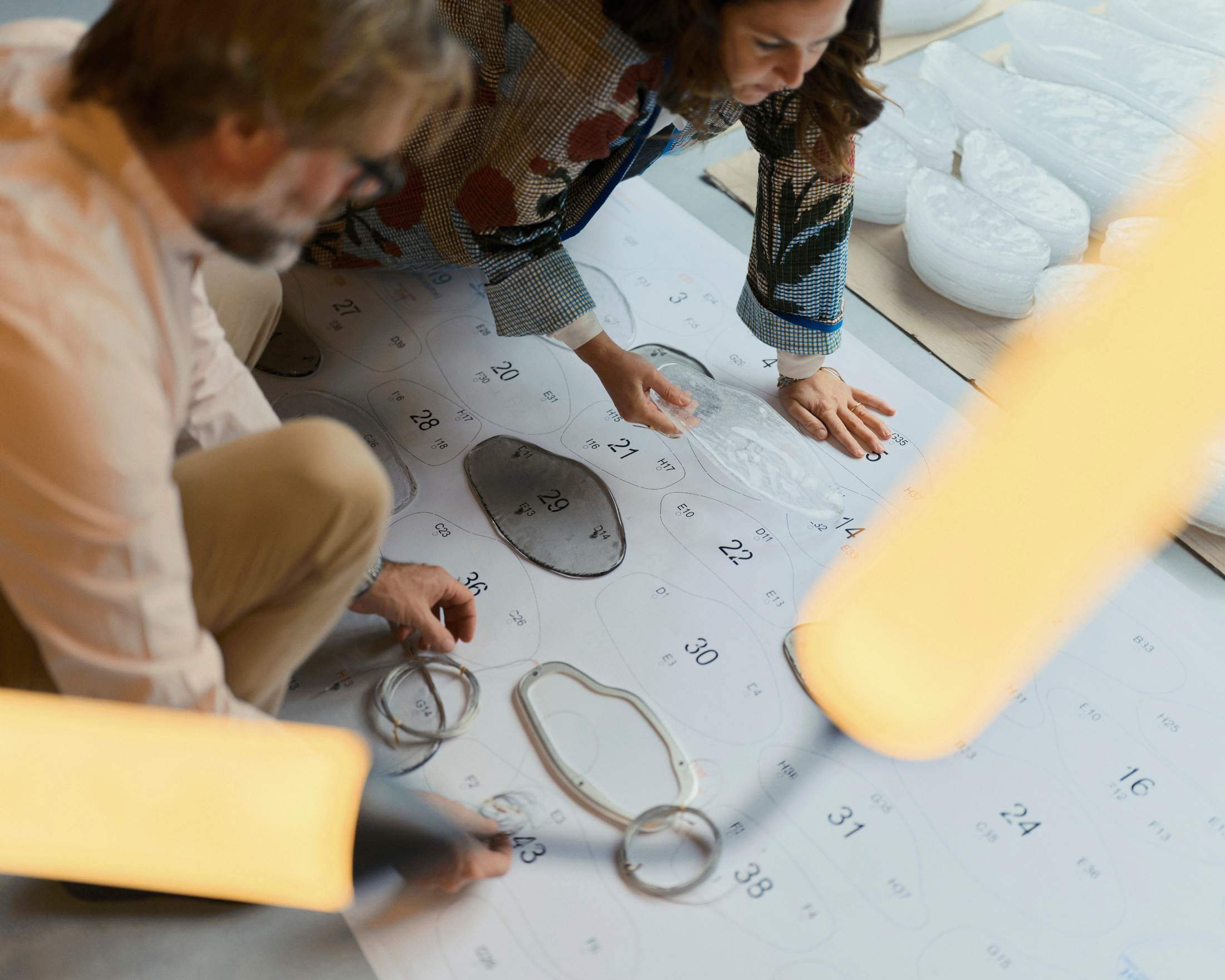
Taking such an approach and creating a compact lighting-design campus in Treviso, Giopato & Coombes has, in effect, cut out the middlemen. By going to the market with products that it has developed in its own workshop space – and by showing technical and craft skills directly to a broad audience – the company is receiving vital feedback from potential new clients. “We operate a little differently,” says Giopato. “We are more like a fashion atelier than an ordinary lighting manufacturer.”
giopatocoombes.com
